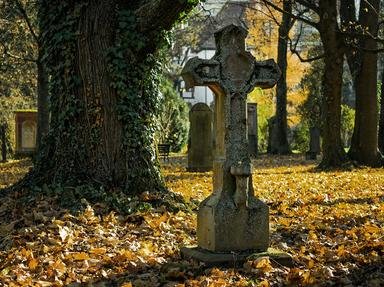Quiz Answer Key and Fun Facts
1. What Nobel Prize-winning Irish playwright wrote more than sixty plays, including "Pygmalion" and "Man and Superman", and died at age 94 on November 2, 1950, from injuries sustained during a fall?
2. What "citizen" American media magnate built a reputation for sensationalism, created the nation's largest newspaper chain, and died on August 14, 1951, of a heart attack at age 88?
3. What Argentinian first lady, who championed labor rights and women's suffrage, died at just 33 years of age of cervical cancer on July 26, 1952?
4. When this man wasn't executing his perceived enemies, starving his people, or fighting his former ally to the west, he was busy holding onto power and running the Soviet Union. What Soviet premier died on March 5, 1953, after suffering a stroke?
5. What British mathematician, logician, and pioneering computer scientist, who helped the Allies break the German Enigma Code in World War II, died by suicide on June 7, 1954, at the age of 41, after ingesting cyanide?
6. What German patent clerk and Nobel Prize-winning scientist, who turned the world of physics upside down with his two theories of relativity, died of an abdominal aortic aneurysm on April 18, 1955, at the age of 76?
7. What English author and playwright famous for his children's books set in the Hundred Acre Wood, died on January 31, 1956, at the age of 74 after suffering a stroke?
8. What stocky half of a silent-film-era comedy duo, who transitioned smoothly to "talkies" and became famous for films such as "Sons of the Desert" (1933), "Way Out West" (1937), and "Babes in Toyland" (1934), died on August 7, 1957, at the age of 65 after a series of strokes?
9. What head of the Catholic Church, born Eugenio Pacelli and often noted for his controversial silence during the Holocaust, died on October 9, 1958, of heart failure at the age of 82?
10. What American jazz and blues "lady", known for powerful interpretations of "God Bless the Child" and "Strange Fruit," died on July 17, 1959, of heart and liver failure at the age of 44?
Source: Author
JJHorner
This quiz was reviewed by FunTrivia editor
ponycargirl before going online.
Any errors found in FunTrivia content are routinely corrected through our feedback system.
